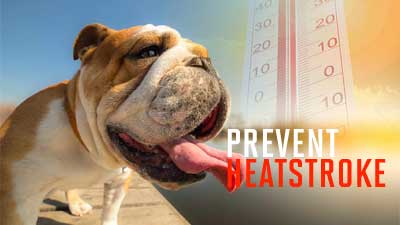- Size
- Smallest
- Small
- Small to Medium
- Medium
- Large
- Giant
- Characteristics
- Smartest
- Hypoallergenic
- Fluffy
- Best Guard
- Best Family
- Best for Kids
- Low Shedding
- Healthiest
- Police Dogs
- Most Calm
- Quietest
- Color
- White
- Black
- Grey
- Brown
- Blue
- Red
- Coat
- Hairless
- Short
- Long
- Origin
- Japan
- China
- Australia
- Germany
- Italy
- United States
- France
- Group
- Hound
- Terrier
- Herding
- Toy
- Working
- Sporting
10 Fascinating, Little-Known Dog Facts

Photo by Caleb Fisher on Unsplash
National Dog Day, celebrated on August 26th, is a time to honor our furry companions by showering them with extra love, treats, and attention. To mark this occasion, let's delve into the world of dogs with 10 captivating and lesser-known facts. These snippets of canine trivia are not only delightful conversation starters but also offer a glimpse into the unique and remarkable aspects of our beloved four-legged friends.
1. The Enigmatic Dog Belly Button
While not immediately visible, dogs indeed have belly buttons, akin to most mammals. These belly buttons are subtle scars left from their umbilical cords. When born, the mother typically chews the umbilical cord, leaving behind a small stump that dries and falls off within days. Unlike human belly buttons, dog belly buttons appear more as oval scars than round innies or outies.
2. Dogs’ Expressive Eyebrows
The heart-melting "puppy dog eyes" we all adore have a fascinating evolutionary history. Research indicates that over years of domestication, dogs have developed facial muscles that allow their eyebrows to convey a more extensive range of emotions. Their ability to move their eyebrows inward and upward enables better communication with humans. Some argue that these expressive eyebrows are a cunning tactic evolved by dogs to manipulate us for extra treats—but who can resist their charm?
RELATED: Do Dogs Personalities Mirror Their Owners?
3. Bluey, the Ageless Wonder
Meet Bluey, an Australian cattle dog renowned for setting the record as the oldest dog ever. Bluey was adopted as a puppy in 1910 and spent nearly 20 years herding cattle and sheep in Australia. With an incredible lifespan of 29 years and 5 months, Bluey's story stands as a testament to canine longevity.
4. Finley's Tennis Ball Feat
Finley, a golden retriever, made a smashing entry into the record books by holding an impressive six tennis balls in its mouth. This remarkable feat earned Finley a spot in Guinness World Records, showcasing the incredible skills and jaw capacity of our canine friends.
5. Savannah's Epic Journey
In a remarkable feat, Savannah, a 7-year-old rescue dog, etched her name in history by becoming the first documented dog to walk around the world. Alongside her owner, Tom Turcich, who documented his global walking journey, Savannah traversed six continents over seven years. Turcich adopted Savannah a few months into his expedition, and together they forged an unbreakable bond, sharing an incredible odyssey across the globe.
6. Dogs and Collarbones
Despite often sporting collars, dogs don't possess functional collarbones like humans. While humans' collarbones, or clavicles, connect shoulders to torsos, dogs' shoulder blades attach to their bodies solely through muscles and tissues. Dogs do have rudimentary "collarbones" mostly made of cartilage, barely a centimeter in length, without articulating with the rest of the skeleton.
7. Sunburn Sensitivity in Dogs
Contrary to popular belief, dogs can indeed experience sunburn, especially those with short or light-colored fur. Protecting them from prolonged sun exposure or consulting a veterinarian about dog-friendly sunscreen can help prevent this discomfort.
8. Magnetic Poop Preference
In a curious scientific study, researchers observed that dogs show a preference for pooping along the north-south axis, suggesting a sensitivity to variations in the Earth's magnetic field. This intriguing behavior was noted across 70 dogs of 37 different breeds over two years, raising questions about the reasons behind it.
9. The Baculum in Male Dogs
A lesser-known anatomical detail is that male dogs possess a bone called the baculum in their penises, distinguishing them from female canines in this regard.
10. The Rare Chinook Breed
Originating as a sled dog in New Hampshire during the early 1900s, the Chinook breed has remained one of the rarest dog breeds globally. With approximately 150 puppies born each year, these magnificent dogs are a testament to their unique heritage and limited population.
Each of these intriguing facts offers a glimpse into the multifaceted world of dogs, showcasing their diverse characteristics and remarkable abilities. As we celebrate National Dog Day, let us continue to cherish and honor our canine companions for their unwavering loyalty, unconditional love, and fascinating quirks that make them an integral part of our lives.
You May Also Like
 Help & AdviceCelebrate Dog's Birthday: 5 Fun Ways To Do It
Help & AdviceCelebrate Dog's Birthday: 5 Fun Ways To Do It Help & AdviceAre Christmas Trees Pet-Safe? Exploring Potential Hazards for Cats and Dogs
Help & AdviceAre Christmas Trees Pet-Safe? Exploring Potential Hazards for Cats and Dogs Dog HealthThe 10 Breeds More Prone to Food Allergies
Dog HealthThe 10 Breeds More Prone to Food Allergies Help & Advice10 Tips for New Dog Owners
Help & Advice10 Tips for New Dog Owners Differences Between5 Differences Between Dogs & Humans You Won't Believe
Differences Between5 Differences Between Dogs & Humans You Won't Believe Dog HeatstrokeThe 9 Dog Breeds Most Likely To Suffer From Heatstroke
Dog HeatstrokeThe 9 Dog Breeds Most Likely To Suffer From Heatstroke